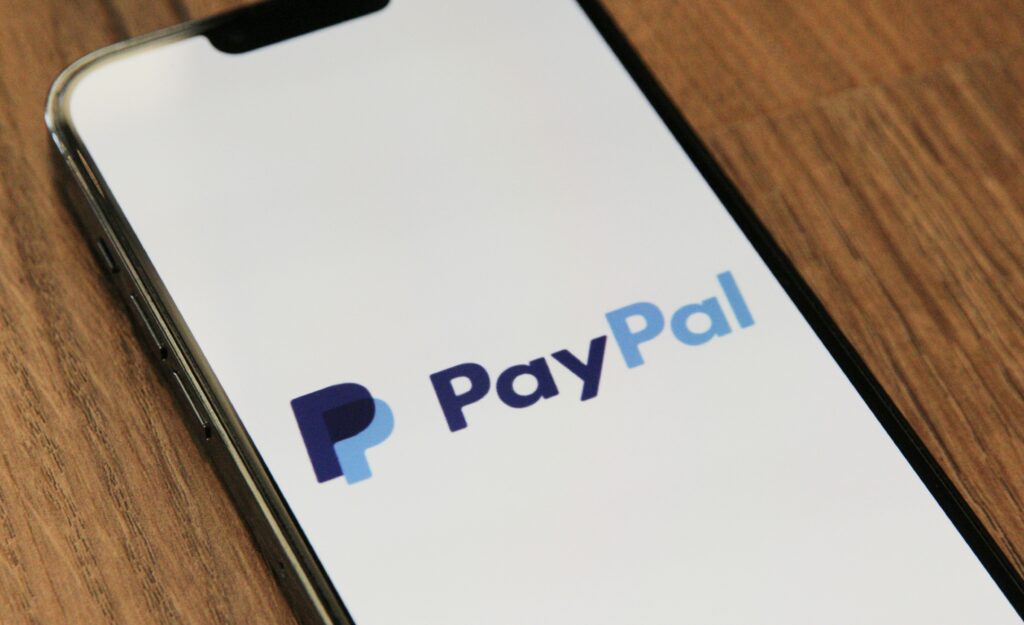Direct response marketing is a strategy that has continuously proven its worth. This marketing technique has a rich history of connecting businesses directly with their desired audiences, urging them to take immediate, measurable action.
The allure of direct response marketing lies in its potency for generating immediate results, its trackability, and the ability to target specific segments with precision.
As we increasingly embrace digital technologies, the world of direct response marketing continues to evolve. Whether it’s through a vibrant social media campaign, a meticulously crafted email, or an interactive landing page – direct response marketing is everywhere, making it more relevant than ever.
Yet, in this digital age where change is the only constant, it is essential for businesses and marketers to stay abreast of the latest trends. The future of direct response marketing promises to be fascinating, driven by emerging technologies, changing consumer behaviors, and shifting marketing paradigms.
In this blog post, we will navigate the exciting path ahead, focusing on the most promising trends that are set to redefine direct response marketing. If you’re looking to future-proof your marketing strategy and stay one step ahead, you’ve come to the right place.
The Evolution of Direct Response Marketing
The roots of direct response marketing can be traced back to the late 19th century, where mail order catalogs were the primary channel for reaching out to consumers directly. These catalogs were designed to invoke an immediate reaction, encouraging the reader to fill out an order form and send it back – a direct response in its earliest form.
Fast forward to the mid-20th century, television and radio entered the scene, transforming the marketing landscape. Infomercials, telemarketing, and direct response radio ads became popular. These mediums still asked for a direct response, such as calling a toll-free number or sending in a text message.
With the dawn of the internet era, direct response marketing took a digital turn markedly away from these traditional marketing techniques. Email marketing, pay-per-click advertising, social media campaigns, and targeted website content started to dominate the marketing scene. These digital channels offered more precise targeting, real-time data, and a plethora of options for consumers to engage directly with brands.
Today, the essence of direct response marketing remains the same – driving immediate and specific action. Yet, the methods to achieve this have been revolutionized, spurred by technological advancements and shifting consumer habits. It’s no longer about broad, one-size-fits-all messages; instead, modern direct response marketing is characterized by personalized, data-driven ad campaigns, delivered across multiple touchpoints, to create a seamless customer experience.
The evolution of direct response marketing is a testament to its inherent adaptability. It has not just survived but thrived amid changes, continuously reinventing itself to meet the demands of the evolving consumer landscape. Yet, everything cycles through and even today we’re seeing an increase in the use of direct mail marketing tactics in ecommerce and direct response.
The Rise of Personalization
One of the most significant shifts in direct response marketing in recent years is the move towards hyper-personalization. In a world bombarded with advertising messages, personalization has become a key differentiator, helping brands cut through the noise and connect with consumers on a deeper level.
Personalization is about delivering tailored messages to individual customers based on their preferences, behavior, and needs. It’s a leap forward from traditional segmentation practices, transforming ‘mass messaging’ into ‘individual conversations’.
Why has personalization become so crucial?
The answer lies in the changing consumer expectations. Today’s consumers expect brands to understand their unique needs and offer personalized experiences.
A real-life example of successful personalized direct response marketing is the e-commerce giant, Amazon. The ‘Customers who bought this also bought…’ recommendation engine is a perfect example of personalization at its best, making consumers feel understood and providing a tailored shopping experience.
The call-to-action (CTA) is also something that is becoming more and more personalized. Every CTA should product a sense of urgency, but potential customers react better to direct response ads with a clear CTA that truly speaks to their needs.
Emerging technologies such as AI and machine learning are further fueling the personalization trend. These technologies can analyze vast amounts of data in real-time, helping brands to understand their customers better and deliver more targeted and personalized marketing messages with measurable results.
We are direct response experts—talk to us about your business!
Integration of AI and Machine Learning
Artificial intelligence (AI) and machine learning (ML) are no longer just buzzwords; they’re transforming the way marketers approach direct response marketing. By harnessing the power of these advanced technologies, marketers are pushing the boundaries of what’s possible, creating more effective and targeted campaigns than ever before.
AI and ML algorithms can process enormous amounts of data at lightning speed, deriving insights that human analysts might overlook. This advanced data analysis can help marketers understand their target audience’s preferences, behavior patterns, and decision-making processes on a much deeper level.
For instance, AI can optimize email marketing campaigns by determining the best times to send emails to each subscriber on an email list (including follow ups), maximizing open rates. ML algorithms can analyze past campaign data to predict which marketing messages are most likely to drive conversions for different customer segments.
In the context of personalization, AI and ML can take things a step further. They can help create dynamic content, where marketing messages are automatically tailored to individual users in real-time based on their behavior and other contextual factors.
A glimpse into the future suggests a more profound integration of AI and ML in direct response marketing. We can expect the rise of AI-driven chatbots for personalized customer interaction, advanced predictive analytics for better direct response marketing campaign planning, and real-time personalization to enhance the customer journey.
But with great power comes great responsibility. While AI and ML open up new opportunities, they also pose ethical questions around data privacy and transparency. Therefore, as marketers, it’s crucial to use these tools ethically and responsibly, ensuring customer trust is maintained.
The Importance of Social Media
In the last decade, social media has grown from a mere communication tool to a powerful marketing platform. It’s a space where consumers connect, communicate, and make purchasing decisions. For direct response marketers, social media platforms offer unparalleled opportunities to engage with audiences on a personal level and stimulate immediate actions.
Social media is especially effective for direct response marketing due to its interactive nature. Marketers can use these platforms to initiate conversations, answer queries, and offer solutions in real-time. It’s also a rich source of customer data, providing insights into audience behavior, preferences, and trends.
Platforms like Facebook, Instagram, and Twitter have built-in direct response advertising systems. These systems allow for precise targeting, ad testing, and real-time analytics. The ‘swipe up to shop’ feature on Instagram Stories or ‘Shop Now’ button on Facebook ads are examples of direct response tactics designed to drive immediate action.
Looking ahead, the role of social media in direct response marketing is set to increase. Emerging trends include the rise of social commerce – buying and selling directly within social media platforms – and the growth of live streaming for real-time product demonstrations and Q&As. Augmented Reality (AR) is also set to make waves, with opportunities for virtual product try-ons and immersive brand experiences.
While leveraging social media for direct response marketing offers significant benefits, it’s essential to remain authentic and customer-centric. With consumers growing more discerning and skeptical about promotional content, brands need to strike a balance between driving immediate responses and building long-term relationships.
The Power of Influencer Marketing
Influencer marketing has taken the digital world by storm, providing brands with a unique way to reach their target audience and drive immediate actions. Essentially, influencer marketing leverages the power of social proof, with influencers acting as trusted voices that can sway their followers’ purchasing decisions.
For direct response marketing, influencers can be a game-changer. Their personal connection with their followers creates a sense of trust and credibility that’s hard to achieve with traditional advertising. When an influencer shares a product recommendation or discount code, it’s not just a promotional message; it’s a trusted friend giving advice.
As we look towards the future, the role of influencers in direct response marketing is set to grow. We can expect to see a rise in ‘micro-influencers’ – individuals with smaller, more engaged audiences – and ‘niche influencers’ – experts in specific fields. Brands might also leverage influencers in innovative ways, such as co-creating products or hosting virtual events, both of which increase brand awareness for you and the influencer.
However, the key to successful influencer marketing lies in choosing the right influencers whose values align with your brand, and who can deliver authentic, engaging content. This strategy ensures that the direct response is not just a one-time transaction, but a stepping stone to building long-term customer relationships.
Omnichannel Approach
In the age of digital transformation, consumers interact with brands across multiple channels – websites, social media, emails, mobile apps, physical stores, and more. Consequently, adopting an omnichannel approach in direct response marketing has become a necessity rather than a luxury.
The omnichannel approach involves integrating and coordinating digital marketing efforts across various channels to create a seamless and consistent customer experience. This means that irrespective of the channel a consumer uses to interact with your brand, the communication and experience remain consistent.
An omnichannel approach to direct response marketing enhances the user experience, leading to improved customer loyalty and better conversion rates. For instance, a customer might see an ad on social media, visit the website for more information, and finally make a purchase via the mobile app. If each touchpoint is coherent and connected, it can smoothly guide the customer along their buying journey, ultimately leading to a direct response – the purchase.
Omnichannel can include multiple types of marketing, including sales funnel landing pages, podcasts, webinars, social media, and more. These forms of marketing work in conjunction to provide a high-quality experience that should, at the very least, result in a bump in lead generation.
As we move forward, the importance of an omnichannel approach in direct response marketing is set to grow. Advancements in technologies like AI, machine learning, and data analytics will further enable marketers to create personalized and consistent experiences across all touchpoints.
However, the key to successful omnichannel marketing is understanding your customers’ journey and preferences. This insight will help you decide which channels are most important for your brand and how to create the most seamless and engaging experience across these channels.
Marketing is just one small part of a successful business. We can help!
Interactive Content
Interactive content, which requires active engagement from the user, creates a two-way dialogue and can drive direct responses more effectively than static content.
Examples of interactive content include quizzes, calculators, polls, virtual reality experiences, interactive videos, giveaways, limited time incentives and more. This type of content is highly engaging and can be incredibly effective for direct response marketing because it encourages immediate action.
And let’s not forget free content received at the end of a quiz, pop-up, or funnel. White papers may not be interactive, but the process of receiving one can be.
For instance, a beauty brand could create a virtual ‘try-on’ feature on its website, allowing customers to see how different makeup products look on their own faces. This interactive feature not only engages the user but can also lead to an immediate purchase.
Interactive content also allows for more personalized and immersive experiences. A user who takes a quiz to find the perfect skincare routine will not only engage with your brand but also receive product recommendations tailored specifically to their needs.
Looking ahead, interactive content is poised to play an even more significant role in direct response marketing. Advancements in technology, such as augmented reality (AR) and virtual reality (VR), will open up new opportunities for creating immersive and engaging interactive experiences.
As you explore the possibilities of interactive content, remember that the goal is not to use technology for its own sake. Rather, the aim is to create meaningful interactions that provide value to your target demographic and specific audience and align with your overall marketing objectives.
Data Privacy Regulations
In an era where data is the new gold, ensuring its security and privacy has become paramount. For direct response marketers, who often rely on consumer data to tailor their campaigns, understanding and complying with data privacy regulations is critical.
Over the years, governments around the world have introduced various data privacy laws to protect consumer information. For instance, the European Union’s General Data Protection Regulation (GDPR) and California’s Consumer Privacy Act (CCPA) set strict rules about how businesses collect, store, and use consumer data.
Non-compliance with these regulations can lead to hefty fines and damage to brand reputation. But more importantly, these regulations aim to foster trust between businesses and consumers.
For direct response marketers, these regulations necessitate a more careful and transparent approach to data handling. This means obtaining explicit consent from users before collecting their data, ensuring data is securely stored, and being transparent about how this data will be used.
In the future, we can anticipate further strengthening of data privacy laws and heightened consumer awareness about data rights. Thus, integrating data privacy into your direct response marketing strategy isn’t just about compliance, it’s about building trust and loyalty with your audience.
How Prepared Is Your Brand for the Future of Direct Response Marketing?
The world of direct response marketing is evolving at an unprecedented rate, shaped by technological advancements, changing consumer behavior, and shifting regulatory landscapes. Marketers who stay ahead of these trends, adapting and innovating their strategies, will be best positioned to drive immediate customer actions and achieve their business goals.
In this ever-changing landscape, choosing the right partners is just as important as implementing the right strategies. Whether it’s for personalization, AI integration, social media, influencer marketing, an omnichannel approach, interactive content, or complying with data privacy regulations, having a reliable partner can make a world of difference.
One such crucial partner is your payment processor. As a high-risk industry, having a payment processor that understands your unique needs and challenges is vital. DirectPayNet is an experienced provider of high-risk merchant accounts, offering tailored solutions to help you navigate the complexities of high-risk eCommerce.
With DirectPayNet, not only do you get a secure, reliable, and seamless payment processing solution, but you also get a partner committed to your success. Our team is continuously tracking industry trends and regulations to ensure that our solutions evolve with your business needs.
OPEN YOUR HIGH-RISK DIRECT RESPONSE MERCHANT ACCOUNT AND SECURE YOUR FUTURE







